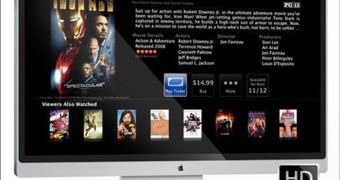A longtime supporter of the theory that Apple will one day take over the living room, Piper Jaffray analyst Gene Munster is at it again this year, touting a full-fledged television set with a new type of remote.
According to Munster, “The core of the debate is an improved set-top box… a hockey puck that attaches to your TV, or an actual television.”
However, the analysts at Piper Jaffray believe all this is about to change. In a telephone interview with Bloomberg, Munster said, “Based on our work, in part, with talking to suppliers in Asia, to talking with people in the industry, we think it’s an actual television.”
Pretty much echoing every other pundit’s beliefs, Munster says the main thing Apple’s television will bring to the table is a new way of controlling the device – a new remote, which implies a new user interface to go with it.
“Specifically, the basic thing it fixes is the remote control problem,” Munster said. “We think fixing that is going to be an important part of it.”
But that’s not the only hurdle Apple needs to overcome. Far from it, actually.
“And the second piece down the road is content, content on demand. That’s essentially what Apple television is.”
Although the analyst swiftly mentions “content” as the second issue surrounding the new television product, this is actually Apple’s biggest issue (by far) as far as its rumored TV set is concerned.
Asked about a potential foray into the TV business, Steve Jobs noted during an All Things D conference a few years ago, “The television industry has a subsidized business model that gives everybody a set top box for free or for $10 a month. And that pretty much squashes any opportunity for innovation.”
Citing the lack of a go-to-market strategy in this business model, Jobs added, “The only way that's ever gonna change is if you really go back to square one and you tear up the set top box and design it with a consistent UI and deliver it to the customer in a way they're willing to pay for it.”

 14 DAY TRIAL //
14 DAY TRIAL //